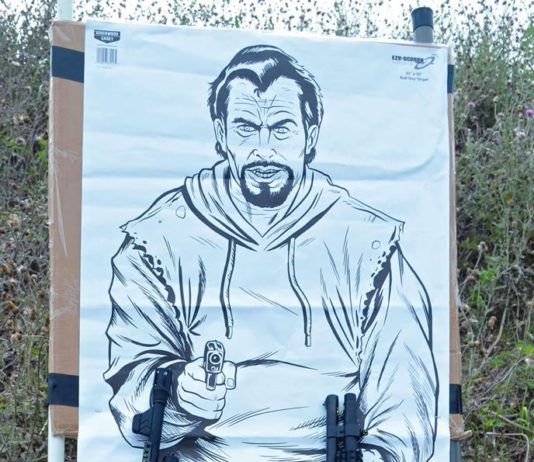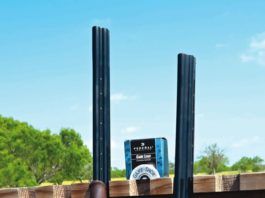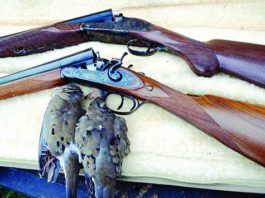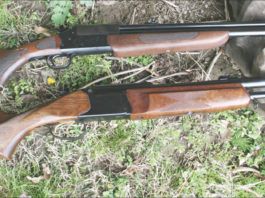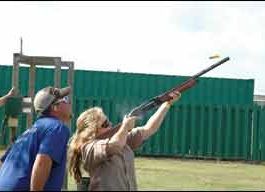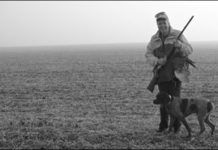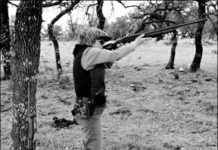Field-Gun Showdown: Semiautos From Weatherby and Escort
20-Gauge Auto Shoot-out: Beretta, Browning, Remington
Solid, Dependable Pumps: BPS Beats Ithaca Featherweight
The quest for a used shotgun that will meet the all-round needs of a hunter and target shooter can often require some lengthy rack time looking over a number of selections. Toss in some specific needs and that search becomes even more complicated. We set out with a goal of finding a small-gauge shotgun that had to meet a number of requirements:
-A length of pull suitable for a youngster or small-stature shooter.
-Reduced recoil to keep a novice shooter from experiencing shell shock and possibly giving up the sport.
-An action that could be worked by either a right-handed or left-handed shooter.
-Simple function and a shell ejection system that did not sling spent shells all over the countryside.
What we finally brought to the test table were two pump-action shotguns that have been providing hunters across the country with a quality field gun for quite some time. Our pair of pumps that met our special needs were the Browning BPS Special Steel Field Model and the Ithaca Ultra Featherlight Model 37.
Both of the shotguns featured short barrels and were more suited to field use than clay target busting; and both offered qualities that have built a good fan base for the veteran firearms.
One of the key features of both shotguns is the bottom ejection system that helps a shooter retrieve fired hulls by keeping them close to your feet, rather than flinging them into the next county. This feature is particularly welcomed by dove hunters who don't want to irritate landowners by leaving spent shells all over the county or by those shooters who like to retrieve their hulls for reloading.
The bottom-ejection system, which worked well with both of our test shotguns, also eliminates the problem of spent shells flying across the field of vision of left-handed shooters, which can happen with a right-hand port of a standard pump shotgun.
While prices and conditions of representative models of the two shotguns might vary by quite a stretch depending upon where the purchaser picks up his prize, we were pleased to find both of our models carried price tags of around $400. As a beginner shooting tool or a reliable back-up shotgun, any quality scattergun costing about four Benjamin Franklins is normally a bargain. As our testing was limited by the parameters of our specific needs, we decided to focus on some standard 2 3/4-inch field and target loads for our test ammunition. The loads included Winchester Super Speed Xtra Game Loads with 2.5 dram equivalent of powder and 7/8 ounces of No. 8 shot with a muzzle velocity of 1,275 fps; Estate Super Sport Competition Target Loads packing 2.5 dram equivalent of powder and 7/8 ounces of No. 7.5 shot with a muzzle velocity of 1,200 fps; and Winchester Super Sport Sporting Clays with 2.5 dram equivalent of powder and 7/8 ounces of No. 7.5 shot with a muzzle velocity of 1,300 fps.
Patterning performance with all the ammunition in each of the shotguns was satisfactory. The loads all produced a 50-50 pattern (50 percent of the shot below and target center and 50 percent below) at 30 yards. That is an ideal pattern for a field gun. Here's our test report:
Stoeger Condor I Over/Under Shotgun a Good Buy In 20 Gauge
Despite...
Ruger Red Label Our Pick In A 20 Gauge Over/Under Shotgun
At times, Gun Tests has been criticized for comparing apples to oranges. An expensive handgun versus a similarly-designed cheaper version in the same caliber, for example. Our intent in such cases is to find out whether the higher price is proportional to higher performance and, if not, to let the chips fall where they may.
We do not expect such criticisms with this comparison of over/under shotguns. Both are closely comparable in price. The Citori is directly descendant from John Browning's wonderful Superposed. The Red Label is yet another success story in the continuing saga of William Batterman Ruger. Both 20 gauges are not ideally suited for trap, skeet or sporting clays when up agai...

























